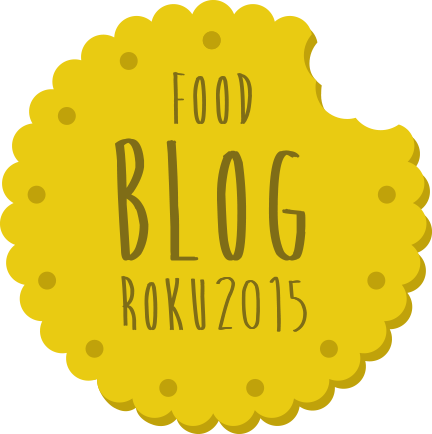When I ran racks of fancy "healthy" food to Bali and fell in love with these multifunctional mixtures of grains and seeds. Of course, there is nothing to be done at home. I will give you some inspiration for suggestions, for example, in a mixture of data. The only downside is that if you want to have a "multi grain" mix consisting of, for example, 10-15 types, it means buying 10-15 individually packaged ingredients. That is, about 10 kg of raw materials, which are not consumed in just one month. So it would be worthwhile to go into it, for example, in a group of friends. Or maybe I could make three variations of these blends and offer them in the store. But I have the feeling that it would be more work than good. What do you think?
And what about mixing? In addition to spitting it into a pot every time you cook rice or quinine, you can prepare the slurry from the mixture, which you use on the basis of amazing, highly hydrated yeast bread! Of course, you will increase your nutritional value, add color and, of course, a varied flavor.
Back to the bread. As I looked, like a shrine, that bag of grains, and planned what to do with everything, I remembered the words of my dear Maškrtnice (probably every baker knows, but for sure Maškrtnici you can find here) when she told me if you want bread like from Practice, you have to start making bread from the slurry! Okay, so my dear Julco let me in! And here's the result! He is amazing! Perfect! I can not stop baking and giving away! You, too, have to bring one to pass through your criticism and be evaluated! And because I've promised a recipe where else, it'll be the easiest way to put it here! For photos that are not only a meal, but a little bit, thank Lucia who makes videos and also gives us a cookbook for Gastrokrouzek. Last week, here we were cutting our videos at home, and I just took the bread out of the oven ...
And what do you need to know about the recipe?
I have at home for about 7 years a flour mill and I like to use freshly ground grain, which is definitely more valuable from a nutritional point of view. But of course, even without him, you will walk around. So do not let go of the fact that I put freshly ground. Then I also have this recipe tried out from two variants of torture combinations. Thus, 570 grams of plain wheat flour and 280 grams of whole wheat flour or 580 wheat bread flour and 280 grams of wheat flour.
Then you can also find the ingredients below in brackets, so you understand that you do not have to add it, but I am giving it. For example, I add spices, ground coriander and caraway to every bread. I like it so much, and I feel the dose is growing steadily increasing. Then also the fennel seed may be added to the bread. It is very aromatic, and it can be very pronounced in bread if you bite that seed, but sometimes try it too. It's a nice refreshment! I would have a maximum of a teaspoon. The same applies to mustard seeds.
Multigrain Bread
19. February 2018

For the last two years, I've been stuck a lot on the rye bread in the mold you find here . I bake it about once a week or two. There are always two pieces. It's terribly healthy, simple, even primitive. In form, so you do not have to stress that the loaf will not be a loaf, but a loaf ... It lasts long and is great as a toast! And so I so easily displaced the classic baking of yeast brewing in the bag. Occasionally I bought the amazing bread from Eskise or Praktika home when I had a way around, and I thought I'd bake again when I had a little more time now that it's really really wrapped up! But do you know what kicked me? Multigrain blend :-D! And suddenly the priorities have shifted!


Postup
In a larger glass, put the spoonful of yeast from the refrigerator, add 120 g of lukewarm (not hot) water and stir 120 g of flour. Leave this mixture for 12 hours. So, for example, get ready for the evening and in the morning you can squeeze the bread, but before that you can again take the spoon of the yeast for the next baking, which will rest in the refrigerator. Kvass must be really active, so used. If you do not feel so often, prefer to rejuvenate it before this first step.
You can prepare pasta right now or in the next 12 hours, but it can not be hot when you add it to the dough. (She could kill all the yeast pretty prepared for the start). Put the multigrain mixture in your pot, pour 450 ml of water and cook. Under the lid, pull at least half an hour until it changes into thicker slurry. Take a look at the photo, which is mainly here to help you guess the consistency. It's about 330 g of ready-made slurry.
Now let's move in time. When the yeast is well fermented and the mash is cooled, you can start the dough.
Put the water in the large bowl or the mixing bowl of the robot, mix both flours and mix briefly. Allow at least half an hour of flour to swell.
Dough in the dough gradually add the leaven, all the slurry, the seeds, the nuts, the spices, if you want and the salt at the end. Put the dough into a hand or a robot (with lots of cooked or cooked grains and nuts, seeds, of course). It is really very sparse, so it should work with it lightly.
Dust transfer the larger containers to the oil. I'm using a large plastic container with lid from Ikea. It will be necessary to get it ripe in the next 4 hours in this tilted container and translate it every half hour. These steps will greatly help the resulting bread structure. From the beginning it will be really thin and sticky. Take a cook card to assist, pick the dough on one side, hold your fingers, pull and fold over the rest of the dough. Do the same thing on the opposite side and then on the side and the other side. So, you're translating from all sides. By the end of this time, the dough will be more compact and more flexible.
Put the prepared dough on the wobbled roll and divide it into 2 parts. You can still disavow the last piece and let it rest for a while. Prepare your fingers. If you have the wicker, sprinkle it with enough flour, or unpack the dishes or bowls with a clean dry cloth, which also flush them thoroughly with flour.
Now make a loaf of both pieces of dough. I know the dough is sticky, but definitely do not make any more flour, try to make the flour just help with the manipulation. Put the booties in the bag with a smooth "perfect" side down. Cover the dough and leave it for the last time. The dough will also help to extend the rising in the fridge. So calmly shake your chicks in the cold for another 12-16 hours.
When the dough is already approaching an imaginary doubling, preheat the oven to full capacity of approximately 250 ° C. If you have a baking stone , you already know what to do with it, let it warm, the same goes for the sheet. I strongly advise you to try the baking process in a cast iron pot , especially for beginners (in a Roman pot or glass frying pan with lid - climax.) My bread is my perfect experience as a professional oven, is irrigated and in a perfectly hot environment, thanks to the climate it creates a diminished space, so it gets beautiful and the crust is acuratic.) In that case, place the pot with the lid in the oven, all methods call for intensive heating of all containers and substrates. I preheat the oven along with the pot for at least 30 minutes, but for an hour.
Now, just pull the pot out of the oven out of the oven so that it can escape as little heat as possible. Put the bread in the pan gently, at this point you can lightly loosen the loaf of water from the sprayer (it is not necessary even if it is going to be great under the lid), you can also create 2-3 cuts on the surface. Fold it back into the oven. If you are sealing on a stone or sheet, loot it quickly and put it in the oven, either by using a few dice dropped on the bottom of the oven (ideally on a plate placed on the bottom of the oven) or cold glass, and quickly close it. Bake in both cases for 10 minutes at 250 ° C, then lower the power to 220 ° C. Bake on the stone or the plate for 30-40 minutes. Cook the baked bread in a sealed container after 35 minutes of total baking. Remove the lid and bake for 10-15 minutes without covering. Anyway, the color of the crust will tell ...
If you have a steam oven at home, it's great and you can take advantage of the extended options. But the principles apply the same. Put the bread in a hot oven that has high humidity. After 10 minutes you no longer need moisture and bake for another 30-40 minutes at 220 ° C. Allow the bread to cool well on the grid. I cover with a cloth (or you can lightly splash it with water) to have a pretty thin and crunchy crust.















